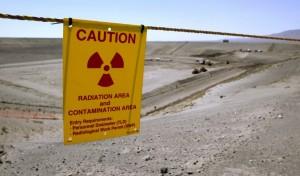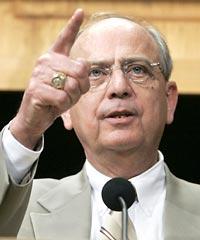forum
library
tutorial
contact

Plutonium and a National Park:
Marking Birth of the Atomic Bomb
by Joel Connelly
The Daily News, December 4, 2014
|
the film forum library tutorial contact |

|
Plutonium and a National Park:
by Joel Connelly
|
 A Manhattan Project National Historical Park will "give Hanford the same status as Independence Hall, Valley Forge and Abraham Lincoln's birthplace," Sen. Maria Cantwell, D-Wash., said in a moment of hyperbole when she introduced park legislation.
A Manhattan Project National Historical Park will "give Hanford the same status as Independence Hall, Valley Forge and Abraham Lincoln's birthplace," Sen. Maria Cantwell, D-Wash., said in a moment of hyperbole when she introduced park legislation.
Unlike these other national landmarks, however, the new historical park celebrates something controversial and deadly -- The Bomb.
The U.S. House of Representatives on Thursday approved legislation that would make a park out of once-top secret sites in Washington, Tennessee and New Mexico where the atomic bomb was developed during World War II.
The 560-square-mile Hanford Nuclear Reservation was created because of its relative isolation and the proximity of the Columbia River. Its B-Reactor -- already a tourist attraction -- manufactured plutonium used in the bomb that destroyed the Japanese city of Nagasaki.
"The legislation will provide a shot in the arm to the Tri-Cities tourism economy," Cantwell said on Wednesday.
 Advocates of the park argue, in the words of bill cosponsor Sen. Lamar Alexander, R-Tenn., that "the Manhattan Project is one of the most significant events in American history." Americans will "learn about the significance of the Manhattan Project and how it continues to shape our history."
Advocates of the park argue, in the words of bill cosponsor Sen. Lamar Alexander, R-Tenn., that "the Manhattan Project is one of the most significant events in American history." Americans will "learn about the significance of the Manhattan Project and how it continues to shape our history."
The National Park Service will have its hands full explaining its new park to ordinary Americans. At Oak Ridge, for instance, the park would include the "Beta-3 racetracks" and "Alpha Calutron magnets at Y-12."
National historical parks span state boundaries. The Nez Perce National Historical Park protects 38 sites in Washington, Oregon, Idaho and Montana. Its highlights are the wind-blown White Bird battle site above Idaho's Salmon River and the remote Bear Paw battlefield near Havre, Mont., where federal troops forced Chief Joseph and his people to surrender.
The basics of the Manhattan Project: Oak Ridge, Ten. produced enriched uranium used in the Hiroshima bomb. The Los Alamos National Laboratory in New Mexico housed scientists designing the bomb, which was first exploded at the Trinity site in the "Land of Enchantment."
Hanford manufactured plutonium for nuclear weapons and continued to do so for 45 years after the end of World War II.
Decades of bomb-making left the Eastern Washington site with the nation's largest volume of high-level radioactive waste. A vast cleanup operation, begun in the late 1980s, is behind schedule and expected to take 50 years to complete. The historical park will be miles away from cleanup sites. Hanford gave birth to the Tri-Cities, an area conscious of (and serious about) its heritage.
A Pasco market is proudly called Atomic Foods. Reservation workers can stop by Atomic Lanes in Richland to go bowling. Columbia High School in Richland fields "The Bombers" sports teams and uses a mushroom cloud as its symbol. (Hanford managers were not amused once when a Seattle P-I reporter asked if The Bombers had ever played baseball against a team from Japan.)
The reservation has seen ups and downs over the years. High and low points:
 U.S. Rep. Doc Hastings, R-Wash., who is retiring this year, has generally opposed park and wilderness designations for federal lands. He opposed the Hanford Reach National Monument and even denounced President Obama for designating a national monument in the San Juan Islands.
U.S. Rep. Doc Hastings, R-Wash., who is retiring this year, has generally opposed park and wilderness designations for federal lands. He opposed the Hanford Reach National Monument and even denounced President Obama for designating a national monument in the San Juan Islands.
But Doc has championed the Manhattan Project National Park. In order to get the park, he has swallowed a 22,000 acre addition to the Alpine Lakes Wilderness Area and protection of the Middle Fork Snoqualmie River in eastern King County.
One other park is created under the House-passed legislation -- an industrial park.
The legislation conveys 1,641 acres at Hanford to the Tri-Cities Development Council for use as an industrial park.
learn more on topics covered in the film
see the video
read the script
learn the songs
discussion forum
